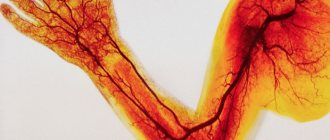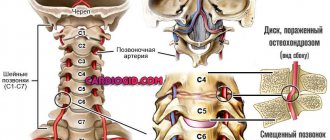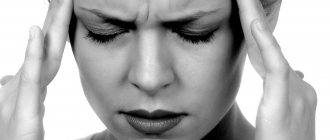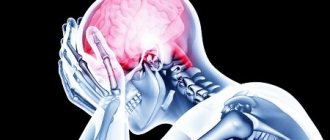Vasospasm of cerebral vessels is a spasm that occurs as a result of the occurrence of pathological neoplasms on the walls of blood vessels. Blood begins to accumulate in the resulting neoplasm. All this leads to its rupture, which causes a sharp narrowing of the diameter of the vessels. Vasospasm usually lasts for several days. It does not go away, there is no improvement. In the worst case scenario, vasospasm can cause ischemic deformation of the brain. It also leads to serious illnesses and death of the patient.
What changes are happening?
Pathological changes
The state of vasospasm implies the manifestation of disturbances in small arterial branches that have a smooth muscle wall.
Normally, the smooth muscle wall contracts according to the following principles:
- impulses travel through special nerve fibers with the help of special hormonal substances into the blood;
- special electrolyte ions change the charge of membrane cells;
- muscles contract with changes in length.
Violations can appear at any of these stages. It should be borne in mind that vasospasm can occur as a natural reaction of the human body to cold.
In such cases, the intensity of symptoms of vasospasm will be minimal. In severe cases, the patient may feel some pain in the area of the internal organs, and circulatory disturbances occur in the area of the vessels of the neck.
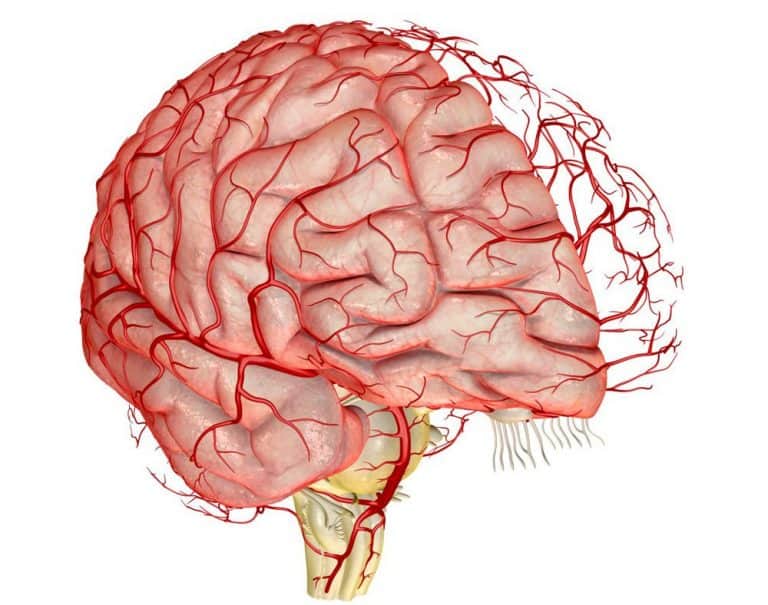
ACVA provokes serious consequences
Types of spasm according to severity
What vasospasm is is already known, but it should be taken into account that spastic crises are divided into 3 groups.
The table will help you understand the nature of each type of spasm.
| Main types of pathology | ||
| Name | What changes are happening | How does the recovery process work? |
| Cerebral vasospasm | Loss of consciousness occurs, motor activity changes, speech function is lost or weakened, vision is impaired, an acute headache appears, and patients complain of tinnitus. | The nature of the recovery process largely depends on the patient’s initial health indicators. A healthy body can fully recover. |
| Angiodystonic spasm | Neurological symptoms are mild. | Normal health is restored quickly. |
| Angioedema spasm m | Symptoms of cerebral circulation disorders appear in the form of asthenia. | The vascular walls reach a state of dystrophy, which is why medications are used to correct neurological disorders. |
Attention! In severe cases, cysts and lacunae may form in the brain matter.
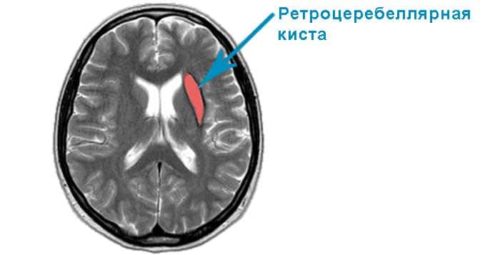
Cyst is an extremely dangerous complication of pathology
According to the nature of vascular damage, vasospasm can be:
- generalized;
- regional.
Generalized vasospasm often provokes disorders of all organs and systems in patients:
- hypertonic disease;
- change in blood viscosity;
- disturbance of metabolic processes in the brain;
- changes in the kidneys;
- pathological changes in the pancreas.
With local spasm, a specific area of the brain with changes is identified. The attending physician will be able to accurately determine the nature of the violations. You should not try to select treatment on your own.
The mechanism of pathology development
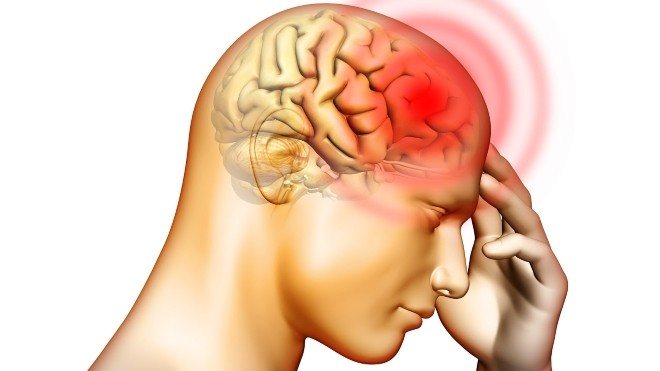
In a healthy person, blood vessels dilate and contract with increased activity, stress or fear. But when a spasm occurs, a sharp narrowing of the artery or vein occurs, reducing blood flow to the tissues. At the same time, oxygen levels decrease and toxin levels increase. The brain reacts to an attack with dizziness, severe pain, vomiting or clouding of consciousness.
Previously, vasospasms were diagnosed in older patients. Aging negatively affects the condition of blood vessels, leading to loss of elasticity and firmness. In recent years, the number of young people with symptoms of the disease has increased 5–6 times. The problem requires studying the cause and threatens the development of vascular dystonia and hypertensive crisis.
Possible reasons

Let's consider the main risk factors for pathology.
Vasospasm of the vessels of the head can occur for the following reasons:
- dysfunction of the muscular layer of the artery walls;
- changing the order of functions performed;
- increased contraction of arterial walls;
- failure of the muscle walls.
The cause of vasospasm may be the following diseases:
- hypertonic disease;
- hydrocephalus;
- osteochondrosis of the upper spine;
- angina pectoris;
- cerebral aneurysm;
- pathologies of the membranes of the brain;
- kidney disease;
- diseases of the thyroid gland associated with disorders of its functions;
- diabetes;
- suffered traumatic brain injuries.
Attention! Cerebral vasospasm occurs as a result of aneurysm damage. The spasm itself represents a certain protective reaction of the body to prevent hemorrhage.
Doctors notice that the trend of vascular pathologies is increasing. This is primarily due to the rhythm of life of modern man and the difficult environmental situation. Life in large cities leaves its mark on the cardiovascular system.
What triggers attacks?
Among the list of causes of dyscircular disorders are:
- intoxication of the human body with heavy toxic substances;
- constant mental work;
- overwork;
- excessive physical activity;
- psycho-emotional exhaustion;
- sleep disturbances, night work;
- changes in atmospheric pressure;
- excessive consumption of caffeinated drinks;
- lack of fluid in the body.

Excessive fatigue as a cause of vasospasm
It should be remembered that the manifestation of vascular spasm is also influenced by a hereditary factor, that is, such a predisposition can be laid down at the genetic level.
Symptoms of cerebral vasospasm
There are characteristic signs of vasospasm of cerebral vessels, and their manifestation is a special reason to seek medical help.
Among the list of the most common symptoms that are characteristic signs of vasospasm are:
- severe headaches of a generalized or local nature;
- dizziness;
- memory impairment as a result of changes in the nature of blood circulation;
- excessive fatigue;
- noise in ears;
- decreased performance.
It is worth remembering that cerebral vasospasm manifests itself sharply and unexpectedly. Its symptoms are no different from the manifestations of other types of vascular spasms.

Changes in the clarity of visual fields as the main symptom of pathology
A distinctive feature is the presence or even worsening of characteristic manifestations after several days.
Present changes in blood flow are assessed if the following symptoms are present:
- muscle weakness on one side of the body;
- speech dysfunction;
- lack of physical strength;
- dullness of reaction;
- visual field impairment;
- nausea;
- numbness of the limbs.
Only a doctor can promptly identify and diagnose the presence of spasm. This is due to the fact that the characteristic symptoms are not unique and can characterize not only vasospasm, but also other conditions.
Diagnostic criteria
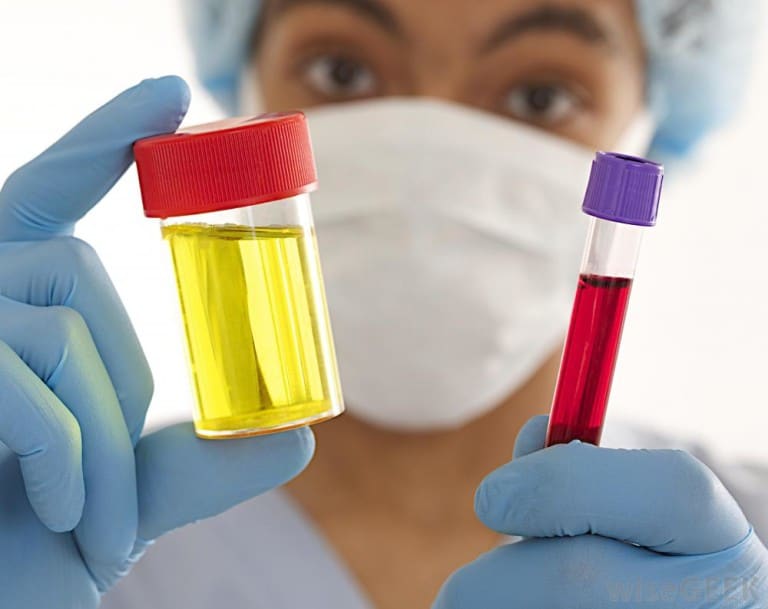
The patient’s blood and urine are valuable biological material that allows us to assess the patient’s condition.
After the manifestation of vasospasm, the patient must undergo a full examination, which includes:
- laboratory methods for analyzing urine and blood;
- magnetic resonance imaging;
- computed tomography.
A complete examination eliminates the risk of concomitant pathologies.
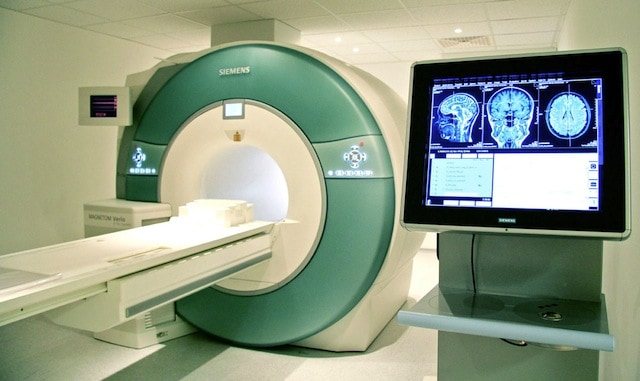
Magnetic resonance imaging is a real breakthrough in brain research
Vasospasm can be a symptom of the following dangerous pathologies:
- hypertonic disease;
- vegetative-vascular dystonia;
- hypoxia;
- hyponatremia;
- hydrocephalus.
For the timely detection of vasospasm, the following methods are used:
- MRI (see What is the purpose of MRI of the brain, cerebral vessels and interpretation of the study results);
- cerebral angiography;
- conventional angiography;
- changes in the strength of cerebral blood flow;
- electroencephalogram;
- Dopplerography of cerebral vessels;
Testing using similar methods can be done in a public hospital or in a private diagnostic clinic. The price of the event may vary significantly.
The most informative picture can be obtained by conducting a series of studies. That is, to obtain a clear picture of changes, it is important to conduct surveys based on different methods.
Attention! It is visually impossible to determine the presence of changes in the vessels. This is due to the fact that there are no characteristic signs of pathology; this condition is individual for each patient.
Due to the fact that during the initial examination it is impossible to determine the presence or absence of changes, a thorough examination is required. In any case, the doctor must follow the instructions, which involve interviewing the patient and assessing the clinical picture of the disease.
The video in this article discusses the main diagnostic techniques and their diagnostic ability in identifying spasms. It is important to remember about the serious complications of the pathology, therefore treatment should be carried out immediately.
Treatment
In general, the term disease implies the presence of changes in the functioning of the body. Since the human body system is a single process, such changes cannot be left without therapeutic correction.
Vasospasm occurring in a mild form is not dangerous, but in severe cases, such a condition can cause serious consequences leading to disability of the patient.

You should not select medications on your own
Attention! The main danger of vasospasm is that the deformation of blood vessels is permanent. In the absence of timely intervention, the patient’s brain feels hypoxia, which is a consequence of necrotic processes.
Treatment of this manifestation should be based on determining the causes. For therapeutic purposes, drugs are used that have the following effects:
- relaxation of the muscle layer of the vascular wall;
- relieving nervous tension;
- normalization of blood pressure indicators;
- elimination of spasms.
It is extremely important to pay due attention to the processes of combating blood clots.
We use non-drug methods
Often, patients refuse drug treatment and resort to using traditional medicine.

Traditional methods of treatment are often used in the treatment of vasospasm
Such actions may be justified if there are no contraindications. The possibility of refusing to use medications should be discussed individually with your doctor.
Among the list of folk remedies, the action of which ensures the elimination of vasospasm, there are:
- Consumption of infusion of medicinal herbs in a mixture: chamomile, dandelion root, St. John's wort.
- Consumption of dried chokeberry berries.
- Head massage.
It is important to remember to follow the rules of a healthy lifestyle:
- consumption of optimal fluid volume;
- menu rationalization;
- performing light physical exercise.
It should be emphasized that the patient should consume clean water.

Good rest, proper nutrition and physical activity are the basis of recovery.
How to stop an attack at home
To alleviate the course of the disease, as well as to improve the general condition, there are a number of measures that will help get rid of symptoms at home:
- take a horizontal or semi-sitting position, while the head end should be raised,
- do a head massage,
- drink a glass of warm water, if you are not allergic, dilute the water with 1 tsp. honey,
- It is useful to wash your face with cold water, apply a damp cold towel to your temples and forehead,
- in the absence of allergic reactions, you can take headache relievers (No-spa, Drotaverine, Ibuprofen),
- if the development of an attack was preceded by a severe stressful situation, drink sedatives (valerian, motherwort).
Self-treatment is possible only if an attack occurs once. Otherwise, mandatory consultation with a specialist is necessary.

